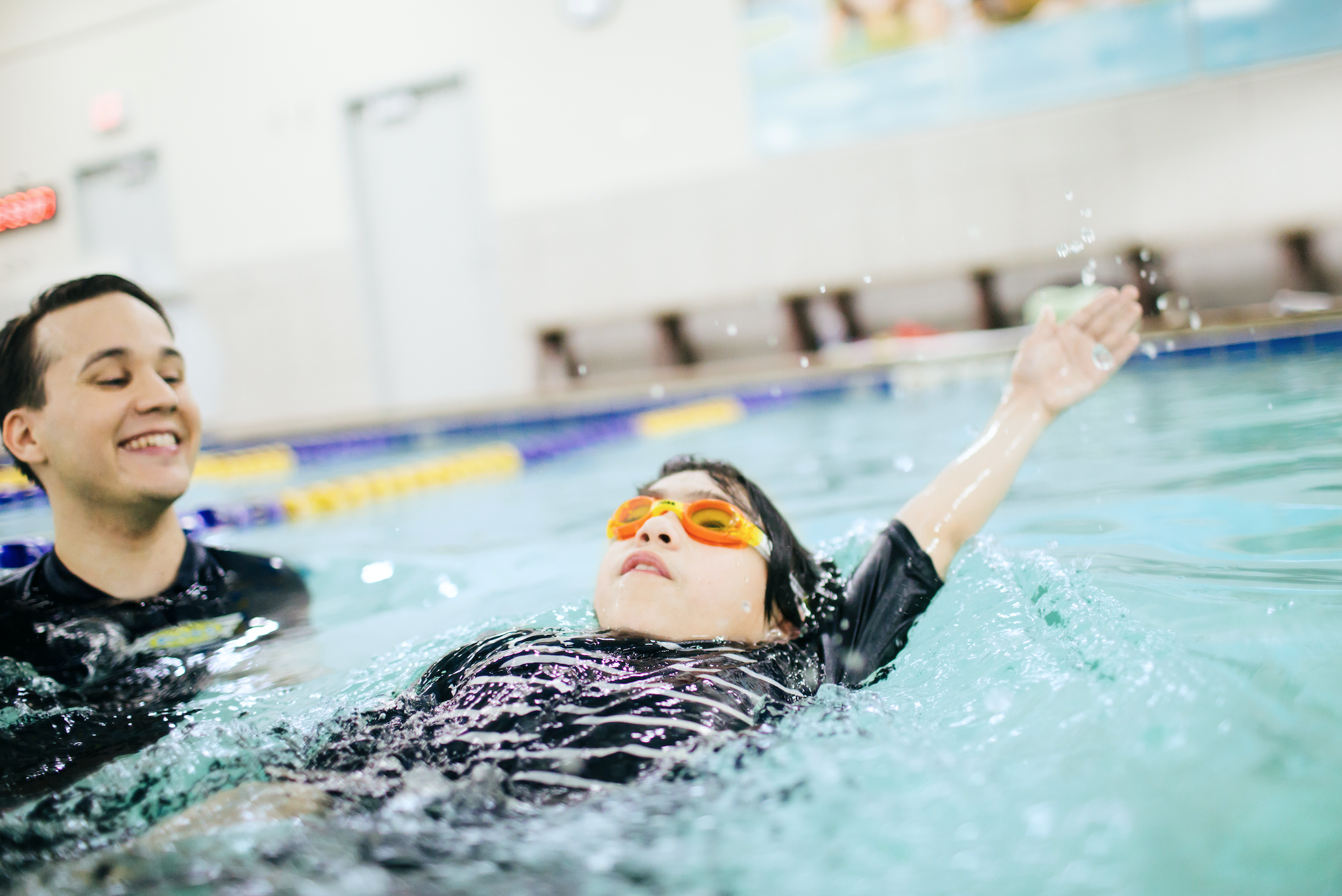In addition to group classes, FOSS offers more specific and individualized environments for learning through private and semi-private instruction.
First, the facts:
- Private classes involve 1:1 instruction with a teacher, while semi-private offers 2:1 instruction (our typical group class will have a 3:1 or 4:1 ratio.)
- A semi-private class must have two students to form; generally two friends, siblings or a parent and child will be enrolled together.
- Tuition is higher than a group class, simply because you are receiving more individualized instruction.
- The classes generally follow our Swim Path curriculum, learning the same skills in the same order. The techniques and speed of learning may be identical to the group class if the student can learn that way, or may be adapted to meet the student’s need.
- Like our other offerings, private and semi-private classes have a set schedule, not a drop-in policy. Often these times are during quieter periods of the day, when there is more lane availability.
- Availability of these classes may be limited by pool and teacher availability.
When should I consider private or semi-private classes?
These classes aren’t for everyone, and if a group class is an option, we will always recommend that first. Our philosophy as a school is that people learn best in small classes with peers of similar age and ability – the group dynamics reinforce lessons, allow students to learn from each other and, for young kids, offer valuable social and emotional development benefits too.
But just like elementary schools offering more personal lessons for those who need it, we find private and semi-private lessons are the best choice in certain circumstances.
-
Extreme fear of water:
Some students need to overcome significant fear before learning to swim is a possibility. Private lessons offer a chance to work on acclimation exclusively in a very personalized manner. Often, once this fear is overcome, group classes become an option.
-
Special needs:
Students with all kinds of needs can learn to swim with success at FOSS, and often can be accommodated in group classes. In some cases, a learning disability, physical disability or behavior pattern makes private or semi-private lessons a better option, where students can learn at their own pace, get more attention and customize the learning process. Learn more about swimming classes for special needs here.
-
Distraction concerns:
Among those with unique needs, we welcome students who are on the autism spectrum or have attention disorders. In addition to the benefits mentioned above, private and semi-private classes are also often scheduled when the pool is quieter and less overwhelming from a sensory perspective.
-
Adult and teen swimmers:
When adults or teens join us for learn-to-swim or technique improvement instruction, they often do have some swimming experience, but need to focus on specific skills (or unlearn bad habits.) Private and semi-private classes allow for that customization. We have even had semi-private classes where a parent and child of similar ability learned to swim together!
-
Competitive swimmers:
People of all ages who swim competitively, may seek to refine their technique or speed outside their team. These highly-customized classes draw on the coaching experience of some of our teachers.
The bottom line: Flexibility, personalization and a controlled environment
If these needs apply to your situation, we encourage you to contact your Foss Swim School to learn more. Prices for private and semi-private classes are posted on each school’s location page.
The first step will be a free preview class, where we can evaluate the student’s current ability and needs. We’ll also take extra time to talk about how these types of classes will benefit the student, and discuss the end goal – is the objective to join group classes at some point? Are there special considerations that might lead us to choose one teacher over another – for example, teachers who have special needs training or experience dealing with fearful swimmers?
Together, we can use all the tools available to help your student become a more skilled and confident swimmer.
